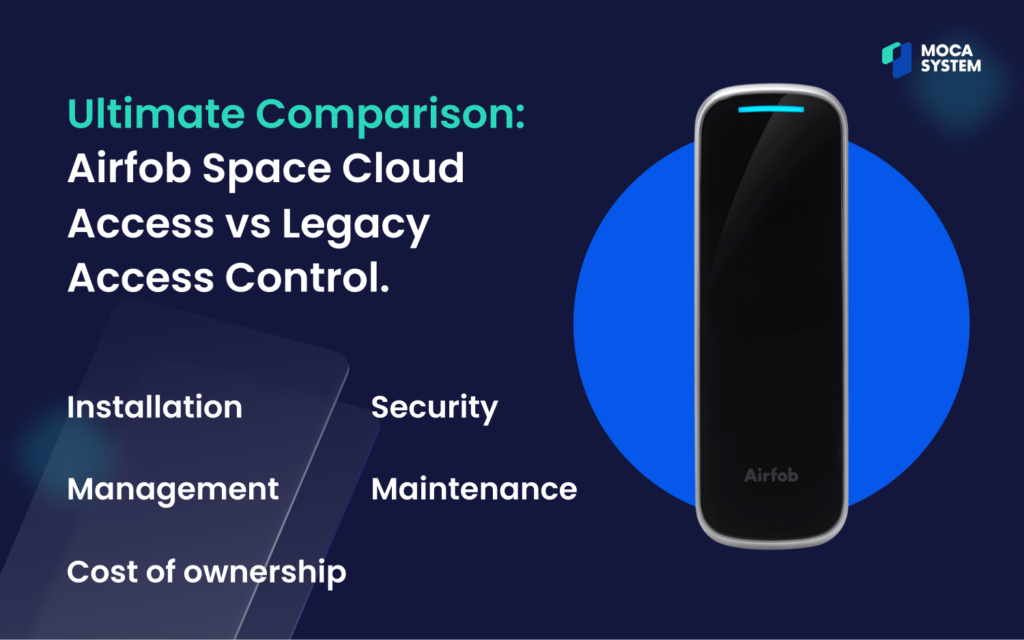Compared: Airfob Space Cloud Access vs Legacy Access Control.

In today’s rapidly shifting security landscape, businesses globally are reevaluating their access control solutions. At the heart of this reevaluation is the comparison between cutting-edge cloud-based systems like Airfob Space and conventional on-premise access control solutions. Let’s dissect the differences:
| Airfob Space | Conventional Systems | |
| Installation & Setup | Airfob Space boasts a straightforward setup process. The Plug & Play functionality means connecting readers to the power and network, followed by a quick registration via the Airfob Pro app. The absence of on-site servers simplifies the installation further. | Traditional on-premise systems generally require extensive setup involving door controllers, servers, and additional software installations. The complexity often results in prolonged setup times and higher initial costs. |
| Cost & Maintenance | By integrating door controllers into readers, Airfob Space slashes upfront costs. The cloud infrastructure ensures that there’s no need for businesses to maintain or update software, resulting in reduced long-term expenses. | Regular software updates, server maintenance, and potential hardware replacements make traditional systems costlier in the long run. |
| Flexibility & Scalability | The cloud foundation allows businesses to scale without the constraints of hardware. Adding new users, doors, or even entirely new locations is a breeze. | Expanding often means investing in more hardware, dealing with more wiring, and ensuring the on-site servers can handle the additional load. |
| Ease of Access & Use | Users can tap their phones on the reader for instant entry. The long-press feature, which can activate readers from a distance, adds an extra layer of convenience. Also, there’s a consistent app experience across devices and locations. | Physical cards or fobs are often required, which can be lost or stolen. Additionally, managing these physical tokens across large teams or multiple locations can be cumbersome. |
| Management & Control | With the cloud-based Airfob Pro web portal and dedicated apps, administrators can manage multiple sites seamlessly. The dashboard offers quick insights, and user/device management is intuitive. | These often rely on localized software or specialized terminals. Centralized control across multiple sites can be challenging, if not impossible, without third-party integrations. |
| Security & Credentials | Mobile access credentials stored in the cloud are more secure, reducing vulnerabilities associated with lost or borrowed physical cards. Plus, granting or revoking access is real-time. | Physical cards can be easily cloned, lost, or shared. Revoking or issuing cards requires manual intervention, and there’s a time gap from when an issue is identified to when action is taken. |
| Integration & Future-readiness | Always evolving, Airfob Space promises integrated visitor registration, meeting room management, and more. Furthermore, its API and SDK allow for easy integration with existing systems. | These systems are often standalone, making integrations complex. Their limited adaptability means they can become obsolete as newer technologies emerge. |